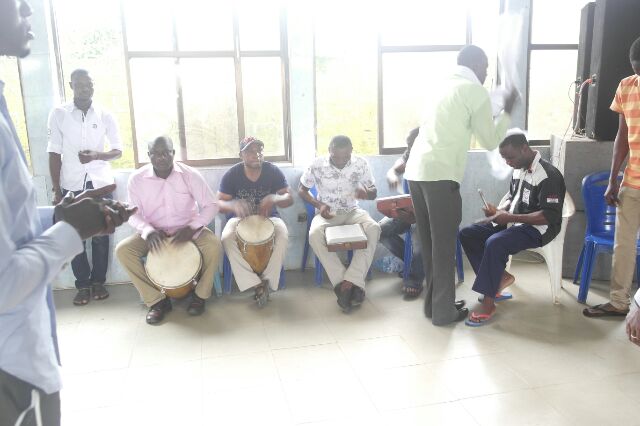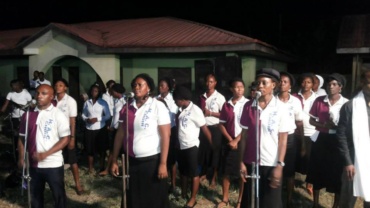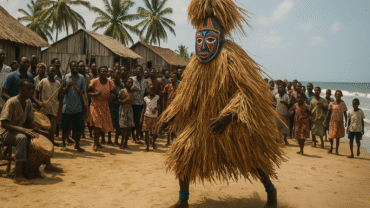Music was a central feature of communal and spiritual life in Ayetoro, and at the core of this tradition were the instruments created by the skilled hands of local craftsmen. In the 1950s and 1960s, the town’s artisans produced a range of musical instruments — drums, rattles, flutes, and stringed devices — using materials readily available in the coastal environment. These handcrafted instruments not only sustained musical practice but also embodied the ingenuity, resilience, and cultural identity of the Happy City.
Archival photographs and oral testimonies describe workshops where artisans shaped wood, stretched animal skin, and bound materials with rope or fibre. The most prominent instruments were drums, constructed from hollowed logs and goat or antelope skin. The surfaces were carefully stretched and fastened to produce tonal variation, enabling drummers to carry both rhythm and meaning in performance. Talking drums, in particular, were valued for their ability to mimic speech, allowing musicians to communicate messages in song during festivals and ceremonies.
Other instruments included metal gongs, wooden flutes carved from bamboo, and shakers filled with seeds or stones. Each was fashioned with attention to both function and symbolism. Flutes were often associated with moments of reflection during vigils, while rattles added texture to the exuberant rhythms of market-day celebrations. The instruments were simple in design but remarkable in their ability to unify sound and spirit.
The process of making these instruments reflected Ayetoro’s cooperative ethos. Craftsmen rarely worked in isolation; knowledge was shared among families, and younger apprentices were taught through observation and participation. Oral accounts highlight the pride artisans felt in producing tools that would serve the community in worship and celebration. In this sense, the instruments were not commodities for individual gain but communal assets, used at feasts, leadership ceremonies, and church services alike.
The symbolic value of the handcrafted instruments extended beyond their musical role. They represented continuity with Ilaje traditions, even as Ayetoro embraced a distinct Apostolic spirituality. Drums and rattles linked the settlement to ancestral rhythms, while their use in hymn-singing and vigils reflected the synthesis of old and new. For the Apostles, there was no contradiction: music, whether expressed in indigenous or biblical form, was understood as an offering of devotion.

Visitors to Ayetoro often remarked on the striking harmony between the community’s plain white garments and the vibrant soundscapes produced by these handmade instruments. The instruments themselves became part of the settlement’s identity, testifying to a people who, with limited resources, created tools of art, worship, and cohesion.
Although many of the original instruments have been lost to erosion and time, their legacy survives in memory, song, and image. The photographs of drummers holding locally crafted instruments, or children learning to play rattles along the shoreline, remain powerful testimonies. They remind us that Ayetoro’s creativity was not only seen in its architecture and governance but also heard in the music that flowed from hands, hearts, and homes.




